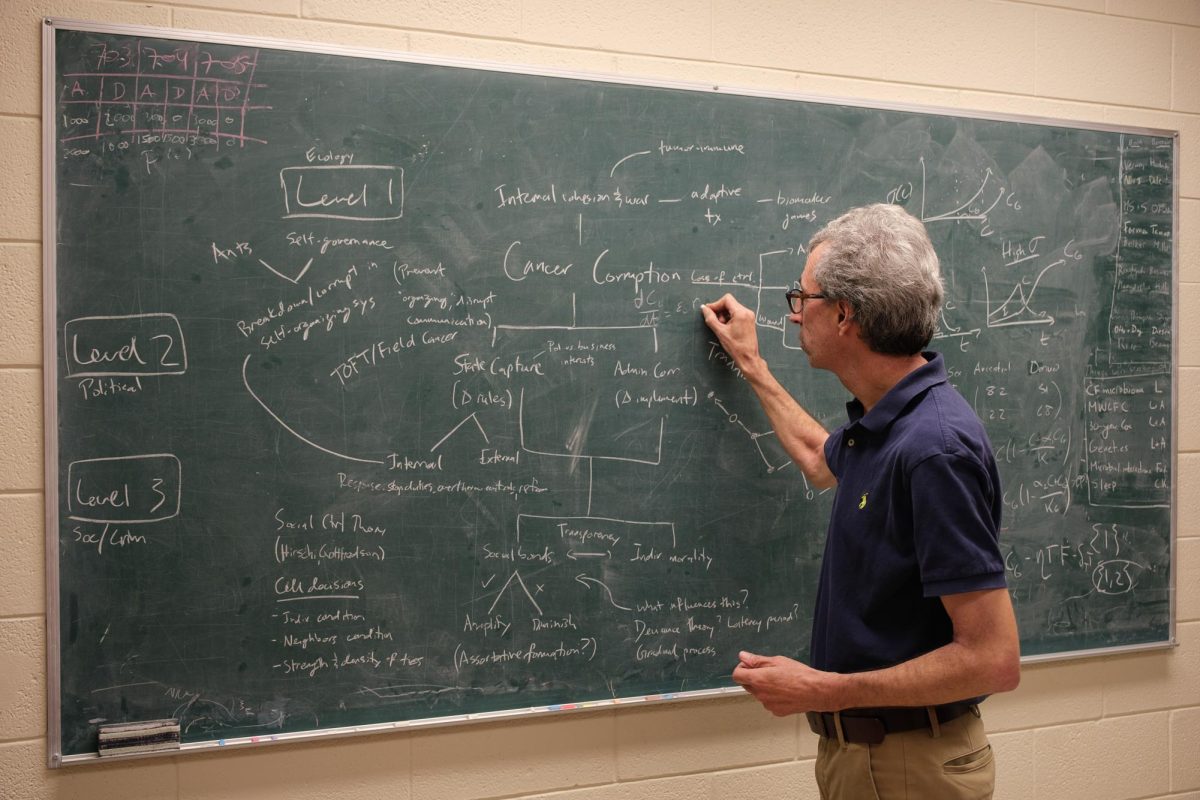From wearing eyeglasses to taking photos on our smart phones, we are constantly looking through lenses. Now, a group of engineers has developed an ultra-thin lens that will change the way we view our world.
Rajesh Menon, an associate professor in electrical and computer engineering, recently developed the lens with a team of graduate students. The thin, flat lenses were previously deemed impossible because it seemed to defy laws of color and light. Current flat lenses can only focus one color of light.
“It turns out that the angle at which light bends is very sensitive to color. Red color will bend a little differently than blue color and green color,” Menon said. “But you can actually get around it by doing some tricks we came up with.”
Those tricks are based around laws of diffraction, or the bending of light through an obstacle. The technology came from Menon’s work with solar panels that he began five years ago. His solar concentrators divide the colors from the rays of light while these lenses do the opposite.

Menon’s super-achromatic lenses were created in the USTAR Nanofab lab by Nabil Mohammad, a graduate student in electrical engineering. The lens is not for commercial use yet, but the technology can be used in glass or plastic lenses much thinner than current photographic lenses. Menon hopes his paper will inspire other researchers to take this information to improve lenses of all types.
“Nowadays if you look at a DSLR camera, you have these big lenses in front of them. The question is, could you get rid of all these big huge lenses and replace it with one piece of glass?” he said. “That would be amazing.”
That is the future of Menon’s technology. NASA is helping fund the research because lighter, thinner lenses would be easier for cameras to send into space. The research is also funded by the U.S. Department of Energy and Utah’s Science Technology and Research Initiative.
The technology from Menon’s lab that splits and focuses different colors of light has been used with spin-off companies, such as PointSpectrum, which creates longer battery lives for LCD display phones.
Peng Wang, a graduate student in electrical engineering, is excited to be a part of the research that can change so many fields of study. Now, the team is exploring how fiber and computational optics can allow them to do multispectral and 3D imaging.
In multispectral imaging, the lens captures a broad range of wavelengths, so patients could take photos of, for example, a skin rash, and send it to their doctor, who could then diagnose the illness based on the different spectrums of light associated with diseases.
Wang said this technology is still fairly new and there are many issues to solve, but he and Menon are confident there will be products on the market in the next couple of years.
@carolyn_webber





















